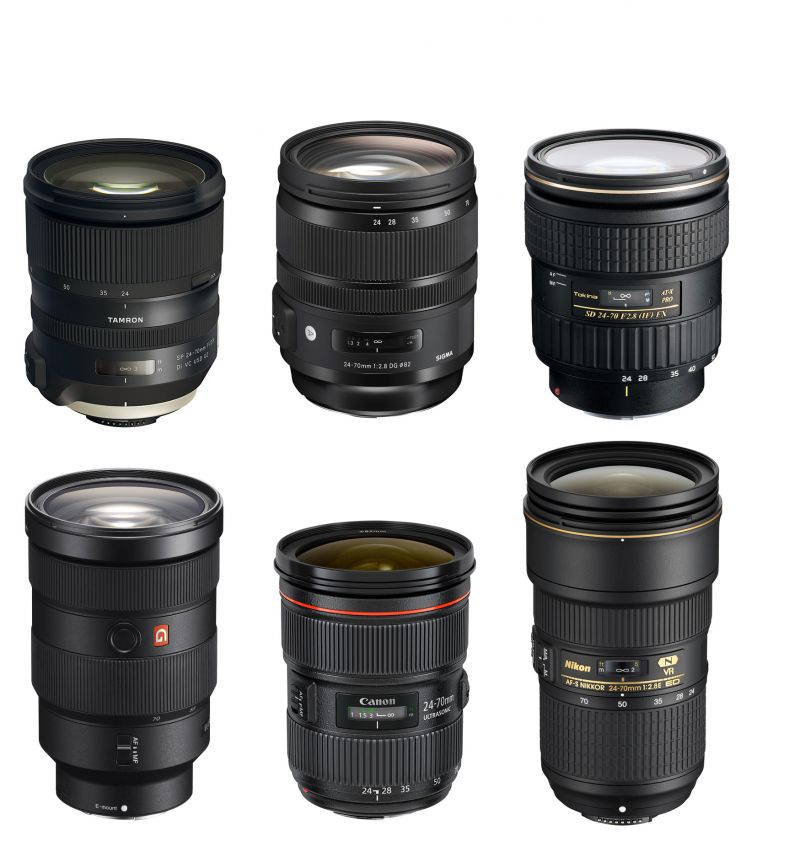
Food photography has always provided some of the most enticing imagery. It resonates with us so strongly because it appeals to one of our most primal needs; the need to feed. Today, with such a wide array of outlets for your photography, you may find yourself in need of a few different perspectives to display the next culinary masterpiece plated on the other side of your lens. In this article, we’ll give present to you the best lenses for food photography.
Note: The lenses listed below are all for full frame cameras. Additionally, the prices listed are current as of May 10, 2018.
Mid-Telephoto Macro Lenses
You could have guessed this lens would make the list. Macro lenses are famed for their sharpness and close focusing ability in stills and video. Some of the options below include image stabilization, making it well suited to produce smooth video should you need to shoot handheld.

- Canon 100mm Macro f2.8L – $749
- Nikon 105mm f2.8 – $896.95
- Sony 90mm f2.8 Macro G OSS – $998
- Panasonic Leica DG Macro-Elmarit 45mm f2.8 – $797.99
- Olympus M.Zuiko Digital ED 60mm f/2.8 Macro Lens – $399
3rd-Party Alternatives
- Tamron 90mm Macro f2.8 – $649
- Sigma 70mm f2.8 – Coming Soon
Is the 100mm is the best lens for food photography?
In food photography, you want to transport the viewer, to entice them to experience the food, to want to eat it. An effective way to do this is through close-up details. Things like water droplets on ingredients or the way food glistens are well-captured with a 1 to 1 macro lens like this Canon. By showing them life-size, you bring the experience of the food to the viewer.

But, macro lenses aren’t only for macro photography, and by pulling back and revealing the food in its setting, you can add context to your story. Even more, on a food shoot you may find yourself needing to photograph a portrait of a chef, and although that’s an entirely different type of work, the 100mm f/2.8L Macro can do that job, too.
As a bonus, the 100mm f/2.8L Macro is one of the best bargains in their L line-up, delivering tack sharp images with beautiful color and contrast for $799. If you’re a couple hundred dollars shy of that and ready to pick up a macro lens today, Canon does offer an even more affordable, non L version which is still quite nice.
If you don’t shoot Canon, worry not – here are alternatives for other systems:
- Fujifilm XF 80mm f/2.8 R LM OIS WR Macro
- Nikon AF-S VR Micro-NIKKOR 105mm f/2.8G IF-ED
- Sony 100mm f/2.8 Macro
- Olympus M.Zuiko Digital ED 60mm f/2.8 Macro
24-70mm f2.8 Zooms

Versatility is the name of the game with the 24-70mm. And if you can only get one lens to do the job for video and stills, this will cover your food photography and then some.
- Canon 24-70mm 2.8L II – $1,699
- Nikon AF-S Nikkor 24-70mm 2.8 – $1,796.95
- Sony 24-70mm 2.8 GM – $2,198
- Panasonic 12-35mm f2.8 – $897.99
- Olympus 12-40mm f2.8 – $849
3rd-Party Alternatives
50mm Fast Primes
 The standard prime allows you to create separation from your background and give you option of shooting top down images. However, when choosing a lens, the wider your aperture opens the wider your wallet will as well. If that’s not in the budget for you, check out the finance-friendly alternatives below.
The standard prime allows you to create separation from your background and give you option of shooting top down images. However, when choosing a lens, the wider your aperture opens the wider your wallet will as well. If that’s not in the budget for you, check out the finance-friendly alternatives below.
3rd-Party Alternatives
f1.8 Alternatives – “Nifty”
24mm Wide Angle Primes
If you want to shoot food recipes and prep demos you’ll need to show your hands and all the necessary ingredients. A wide prime will give you the perspective you need for your next cooking tutorial, time lapse, or recipe demo.
- Canon 24mm f1.4L – $1,549
- Nikon 24mm f1.4G ED – $1,996.95
- Olympus M.Zuiko Digital ED 12mm f2 – $799
- Panasonic Leica DG Summilux 12mm f1.4 – $997.99
Third Party Alternative
- Sigma 24mm f1.4 Art – $1,199
Conclusion
When first building a photography kit, versatility is key. You’ll want to start your gear collection with pieces that will offer the most bang for the buck. Of course, what you need will depend on the types of photography in which you specialize. If your niche happens to be food photography, we hope this article has helped you determine the best lens for food photography.





Get Connected!